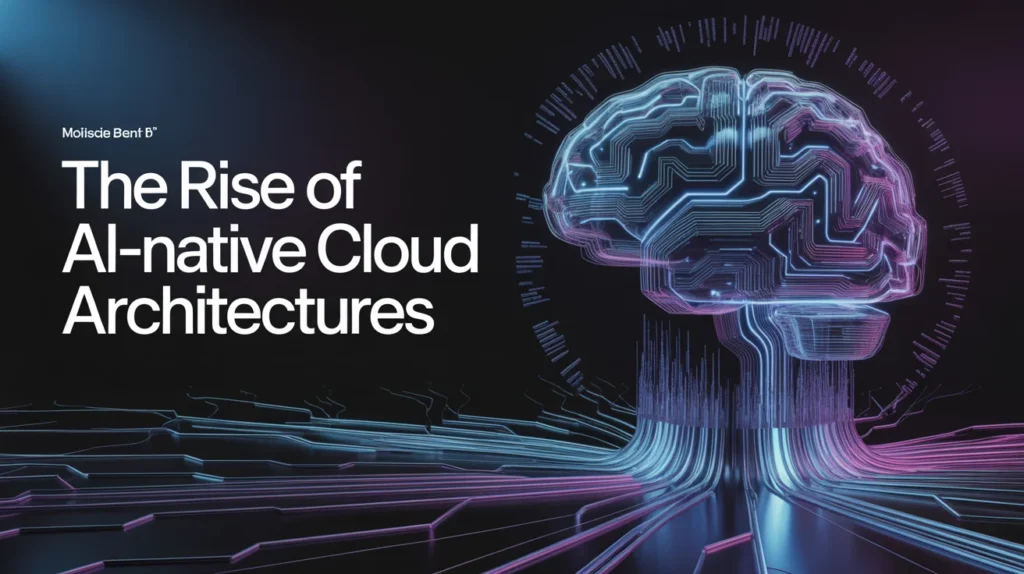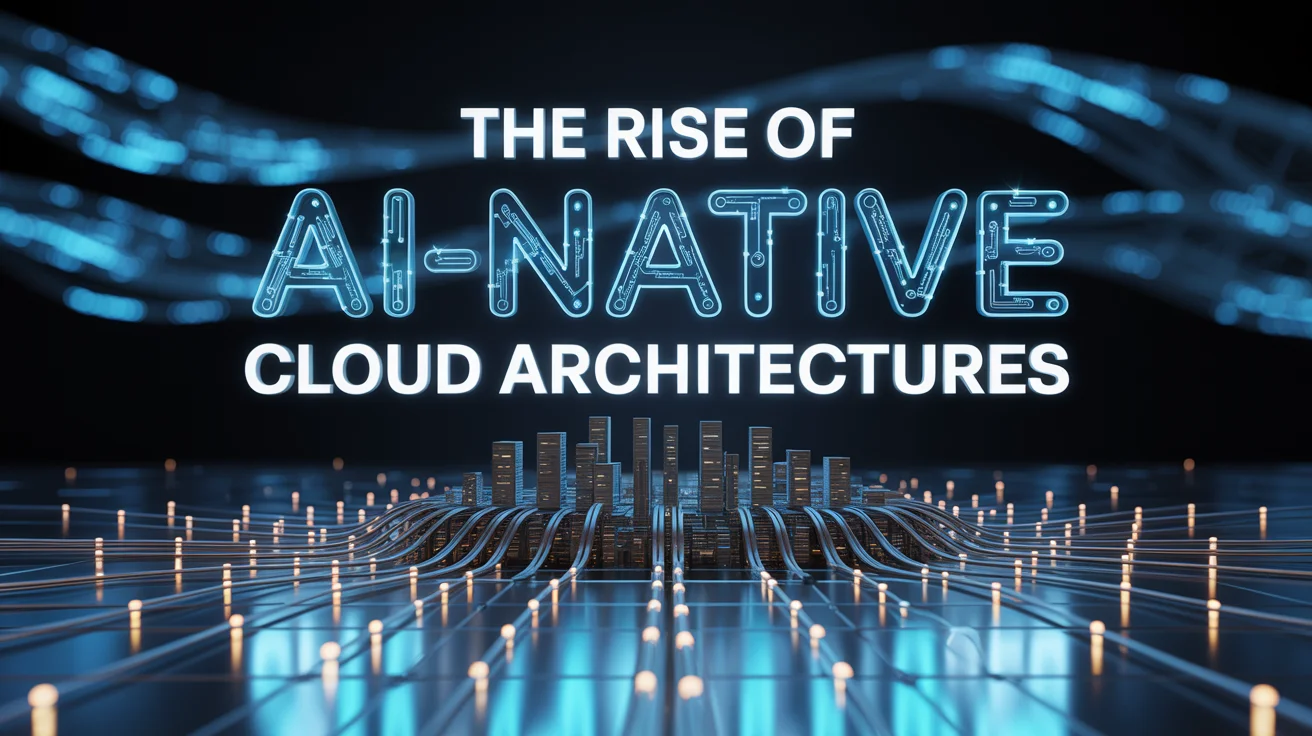In today’s digital landscape, AI is not just an add-on, it’s the core of new cloud systems. The rise of AI-native cloud architectures marks a decisive shift in how businesses operate, innovate, and scale.
This approach blends cloud infrastructure and AI from the ground up, allowing more intelligent processing, automation, and decision-making.
Unlike traditional cloud models, AI-native systems are designed with machine learning, data handling, and real-time analytics in mind. This makes them faster, more adaptable, and more efficient in handling modern business challenges.
What Makes AI-Native Cloud Different?
AI-native cloud isn’t just about hosting AI apps. It’s about building cloud environments where AI is deeply embedded into the system’s DNA. These architectures are built to learn, adapt, and optimize over time.
Traditional clouds often require bolt-on AI tools. But AI-native platforms have built-in intelligence. This allows them to automatically improve performance, predict user behaviour, and offer tailored services.
They’re also built to scale with the demands of complex AI models, including deep learning and natural language processing.
Benefits Driving Adoption of AI-Native Cloud
AI-native cloud platforms bring business agility, speed, and scalability. Companies can now launch AI-powered services without significant infrastructure changes. This saves time and boosts innovation.
They also allow real-time insights from massive data sets, empowering businesses to react quickly and make smarter decisions.
Additionally, AI-native cloud systems support cost efficiency by automating resource management and scaling based on real needs.
- Predictive analytics enhances operational decision-making.
- Automated infrastructure reduces manual tasks.
- Improved data processing leads to better customer experiences.
- Seamless integration with edge devices improves performance.
Key Technologies Behind AI-Native Cloud

These architectures rely on a combination of advanced technologies. Each piece plays a vital role in enabling intelligent automation and responsiveness.
First, containerization and microservices allow AI features to be deployed flexibly across cloud environments. Next, GPUs and TPUS ensure the computational power to train deep learning models. Lastly, real-time data streaming systems provide instant access to analytics.
These elements work together to create scalable and intelligent infrastructure. AI-native cloud is the foundation for modern apps like autonomous vehicles, innovative healthcare, and predictive finance.
How Enterprises Are Adopting This Shift
Many industries are embracing AI-native cloud systems to stay competitive. Retailers use them for dynamic pricing and personalized recommendations. Banks use them to detect fraud in real time. Healthcare providers use AI-native systems to support faster diagnosis and more competent patient care.
This transformation isn’t just for big tech firms. Small and mid-sized businesses are also shifting to these systems through managed AI cloud platforms. They get the benefits without needing deep in-house expertise.
Challenges in Building AI-Native Architectures
Despite the benefits, adopting AI-native cloud isn’t simple. One major challenge is data management. AI systems need clean, reliable, and real-time data to work correctly, and ensuring this at scale is difficult.
Another challenge is the lack of skilled professionals to design and maintain AI-native systems. These architectures require a blend of AI, cloud, and security knowledge.
Also, organizations often face integration issues when moving from legacy systems to AI-native environments. This can slow down the transformation process.
Solutions to Overcome AI-Native Cloud Barriers
Companies must take a strategic approach to overcoming these challenges. First, investing in training and upskilling staff is key. It ensures that the internal team can manage new tools and systems.
Second, partnering with cloud providers that offer AI-native solutions can simplify the transition. These platforms come with built-in tools, reducing the need to start from scratch.
Finally, applying strong data governance policies helps maintain data quality, which is essential for AI models to perform well.
- Upskill teams with cloud and AI knowledge.
- Use managed services for more straightforward implementation.
- Focus on robust data governance frameworks.
- Adopt hybrid strategies during migration from legacy systems.
AI-Native Cloud and Edge Computing
AI-native cloud systems work well with edge computing. Together, they push intelligence closer to the user, reducing latency and improving performance in applications like Iot and real-time monitoring.
Edge computing enables AI models to run near the data source, while AI-native cloud management manages training and deeper analytics. This combination leads to more innovative and faster systems.
Industries like manufacturing, logistics, and healthcare benefit most. They rely on low-latency, intelligent responses at the edge.
Real-Time Use Cases of AI-Native Cloud
AI-native cloud is already changing how businesses operate across various sectors. In customer service, AI bots handle queries with high accuracy and speed. AI In cybersecurity, detects threats before they happen. AI In e-commerce, tracks user preferences and boosts conversions through personalized experiences.
Governments are exploring AI-native systems for intelligent city management, from traffic control to emergency services.
Security in AI-Native Cloud Systems
Security is a top concern in AI-native environments, which manage vast volumes of sensitive data. That’s why modern security must be embedded into every architecture layer.
AI also helps improve security. It can identify unusual patterns and potential breaches in real time, and self-healing systems can respond without human intervention.
Organizations must implement AI-driven security protocols alongside traditional methods to protect their assets.
The Future of AI-Native Cloud Architectures
AI-native cloud will continue to evolve. As AI models become more advanced, these architectures offer even more automation and intelligence. We will see greater use in robotics, immersive tech, and smart city infrastructure.
Eventually, AI-native systems may support full autonomous business operations. This would include AI making supply chain decisions, managing finances, and optimizing workflows all without human input.
- AI-native systems will power autonomous enterprises.
- Cloud-native AI will integrate with AR/VR and Iot.
- Decentralized AI models will run across multiple nodes.
- Real-time language processing will improve multilingual services.
Best Practices for Adopting AI-Native Cloud
Businesses need to follow key strategies to succeed with AI-native cloud. Start small with pilot projects. Choose high-impact areas where AI can deliver value. Monitor results, and then scale gradually.
Build strong collaborations between AI teams, DevOps, and business leaders. This ensures alignment of goals and effective implementation.
Finally, always focus on ethical AI use and transparency. This builds trust with users and regulatory bodies.
Conclusion
The rise of AI-native cloud architectures transforms how organizations build, deploy, and manage intelligent systems.
By blending cloud-native principles with embedded AI, these platforms enable faster, smarter, and more scalable innovation.
While challenges exist, the potential for long-term growth and operational efficiency is massive. Businesses that embrace this shift now will lead the future of intelligent digital transformation.
Frequently Asked Questions:
Q: What does AI-native cloud mean?
A: It refers to cloud systems built with AI at the core, not as an add-on. These platforms are optimized for AI functions like data handling, real-time decisions, and machine learning.
Q: Who benefits from AI-native cloud systems?
A: Improving speed, efficiency, and automation benefits businesses in all sectors, including healthcare, finance, manufacturing, and retail.
Q: Is AI-native cloud more secure?
A: Yes, it can be. AI-native systems often include real-time threat detection and self-healing features, strengthening cybersecurity.
Q: Can small businesses adopt an AI-native cloud?
A: Absolutely. Many cloud providers now offer managed AI-native services tailored for startups and small firms.
Question: What is an AI-Native Cloud Architecture?
Answer: It’s a cloud system built with AI at its core for smarter, faster, and more efficient performance.




